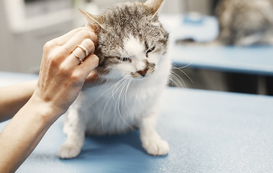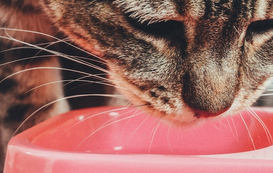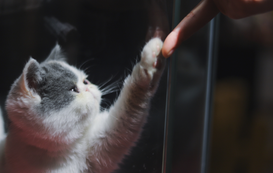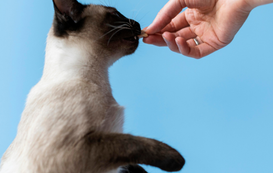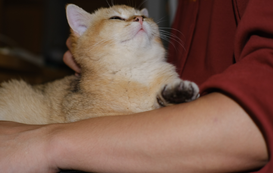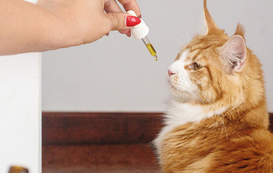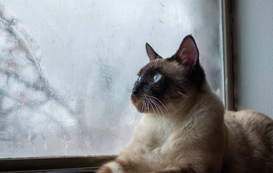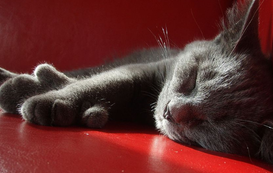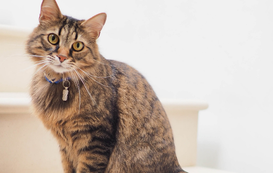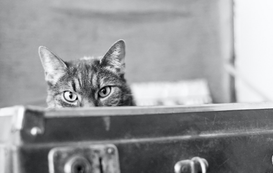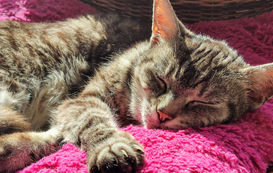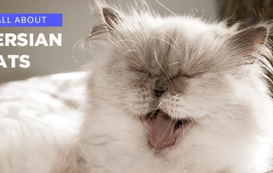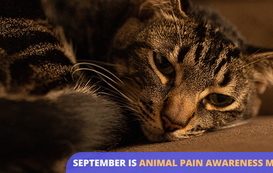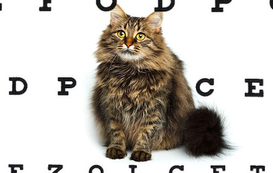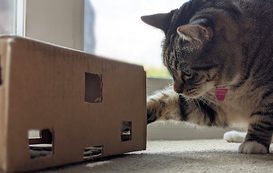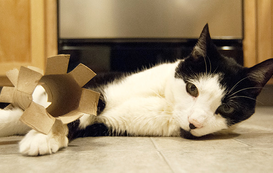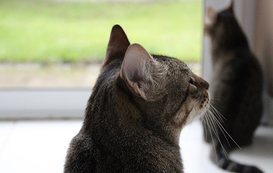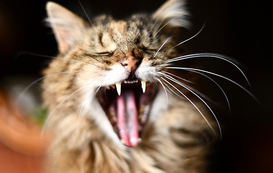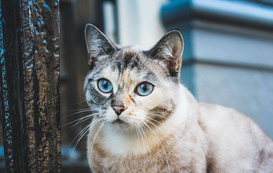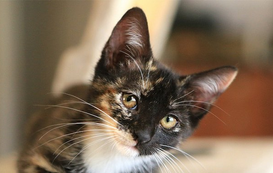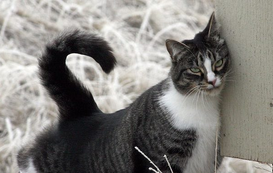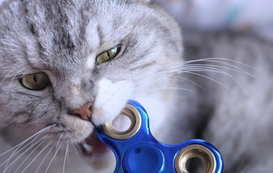- Home
- Cat Sitter Blog
- Cat Health
- National Pet Health Insurance Month: A Pet Insurance Primer for New Cat Parents


Popular posts
National Pet Health Insurance Month: A Pet Insurance Primer for New Cat Parents
As many cat parents would agree, the experience of being "owned" by a cat is a blessing, with many rewards and a lot of happiness along the way. But, there is always the chance of hitting a bump in the road along our wonderful cat parenthood journey - namely, an unexpected illness or injury.
Fortunately, pet insurance can assist you in avoiding unforeseen expenses when your cat needs medical attention. A pet insurance plan will help by compensating you for a portion of the covered medical costs after veterinary services are rendered. Ultimately, pet insurance protects both your cat and your finances.
That being said, pet insurance isn't for everyone, and not all coverage is created equal - and that's exactly why we've brought you this Pet Insurance Primer for New Cat Parents.
What is pet insurance?
Pet insurance is a type of health insurance that, depending on your coverage, contributes to your cat's medical expenses. The goal of having pet insurance is to make the costs of treatment more manageable. Pet insurance is available from many well-known, major insurers, as well as some smaller companies and even insurance companies exclusively for pets.
When should I obtain pet insurance for my cat?
You may apply for coverage for your cat at any time. However, stipulations may require the cat to have visited the vet in the last 12 months. It's best to get your plan when your cat is a kitten, as this will help ensure costs are covered versus being excluded due to pre-existing conditions. (Doing so will also mean the premiums are lower.)
How do I know if I will benefit from pet insurance?
Traditionally, pet insurance was beneficial if a cat experienced a catastrophic health event, but less so if they (fortunately) only needed routine visits. Things are changing these days, and the best place to start is to identify what matters to you.
For instance, do you want lower monthly premium payments? Then your priority will be finding a plan with a higher deductible. Do you want access to complementary medicine for your cat, such as acupuncture, herbal remedies, and homeopathy? Then you'll want to look for a plan that includes such treatments.
What is covered by pet insurance?
Examples of traditionally covered expenses include:
- Allergies
- Broken limbs
- Diabetes
- Renal disease
- Upper respiratory infections
What isn’t covered by pet insurance?
When comparing policies, it's just as important to find out what isn't covered as what it is.
Examples of what is traditionally not covered include:
- Annual exams
- Dental hygiene
- Parasite protection
- Prosthetics
- Vaccinations
Further, pre-existing conditions are typically not covered. For instance, if your cat was diagnosed with arthritis before you decided to sign up for the insurance plan, then the plan will not cover any treatment for arthritis.
Even if your cat has not been diagnosed with a condition or disease, ailments prevalent in particular breeds might be viewed as pre-existing diseases and thus not covered. Knowing if this applies to your cat is essential before you choose a plan.
Pet insurance has become more popular in the last few years, and there have been some developments. For one, you can purchase "wellness riders" for some policies, which will reimburse you for a portion of wellness costs. Or, you may be able to buy a stand-alone plan just for wellness care or participate in a rewards program that acts as a sort of rebate for getting your cat wellness care.
Another recent change is that some companies are offering plans to cover pre-existing conditions. That means that even if your cat was diagnosed in the past with a particular ailment, the plan will cover the costs related to its treatment. Note that these plans can be significantly more expensive than plans that do not cover pre-existing conditions.
How much does pet insurance pay?
This will vary from plan to plan, and it should be clearly stated in the plan materials. Most insurance policies cover 70 to 90 percent of a given procedure's cost. It is also essential to understand that a policy will also have an annual maximum.
In addition to how much the plan pays on approved expenses, you will also want to consider the deductible. A deductible is an amount you pay for covered health care services before an insurance plan starts to pay.
Finally, check the fine print for the specification on who ultimately says whether a procedure is essential and covered.
All of these points are disclosed in the policy and may be in the small print, so read it carefully and in its entirety.
How can I learn more about pet insurance before signing up?
Many insurance companies offer many different plans, so you definitely want to do some comparison research before signing up. However, it will probably be easier than you think to find a plan that works well for you and your cat by doing your homework ahead of time.
You may wish to visit a website that includes reviews of insurance policies, such as ConsumersAdvocate.org. The North American Pet Health Insurance Association (NAPHIA) also has some great information on their site, including a guide on selecting coverage.
When you're ready to move forward, be sure to get multiple quotes for plans so that you may choose a level of coverage that is suitable for your cat and includes what you really need.
What if I am still unsure?
If you are still unsure about signing up for pet insurance, turn to your built-in resources:
Ask friends who are fellow cat parents - they can often recommend a good company or convey any less-than-favorable experiences they may have had.
Consult your vet - most know about pet insurance and may advise you on its suitability for your cat.
Pros and Cons to Consider
To summarize, here are some basic pros and cons of pet insurance:
Pros:
- It can help pay for treatment you may otherwise be unable to afford.
- Parents with multiple cats may be eligible for discounts.
- You may be able to add riders or further customize your coverage.
- You can typically choose the payment plan that is right for you - annual or monthly.
- You can use any vet you wish when your cat is hurt or ill.
Cons:
- It may be expensive, especially if your cat is older.
- Lots of paperwork may be required.
- Your cat may be excluded due to some conditions.
- You will still need funds to pay the bill in advance and then file for reimbursement.
- Some companies won't accept cats that are older than a set age.
The Takeaway
The choice to purchase health insurance for your cat is entirely personal since pet insurance is ultimately about your own peace of mind. When your cat is covered, you won't need to be anxious about a substantial, unexpected vet expense coming out of nowhere. If you do decide to purchase a pet insurance policy, take your time choosing coverage and thoroughly review your options before signing up.
Photo by Freepik.com









